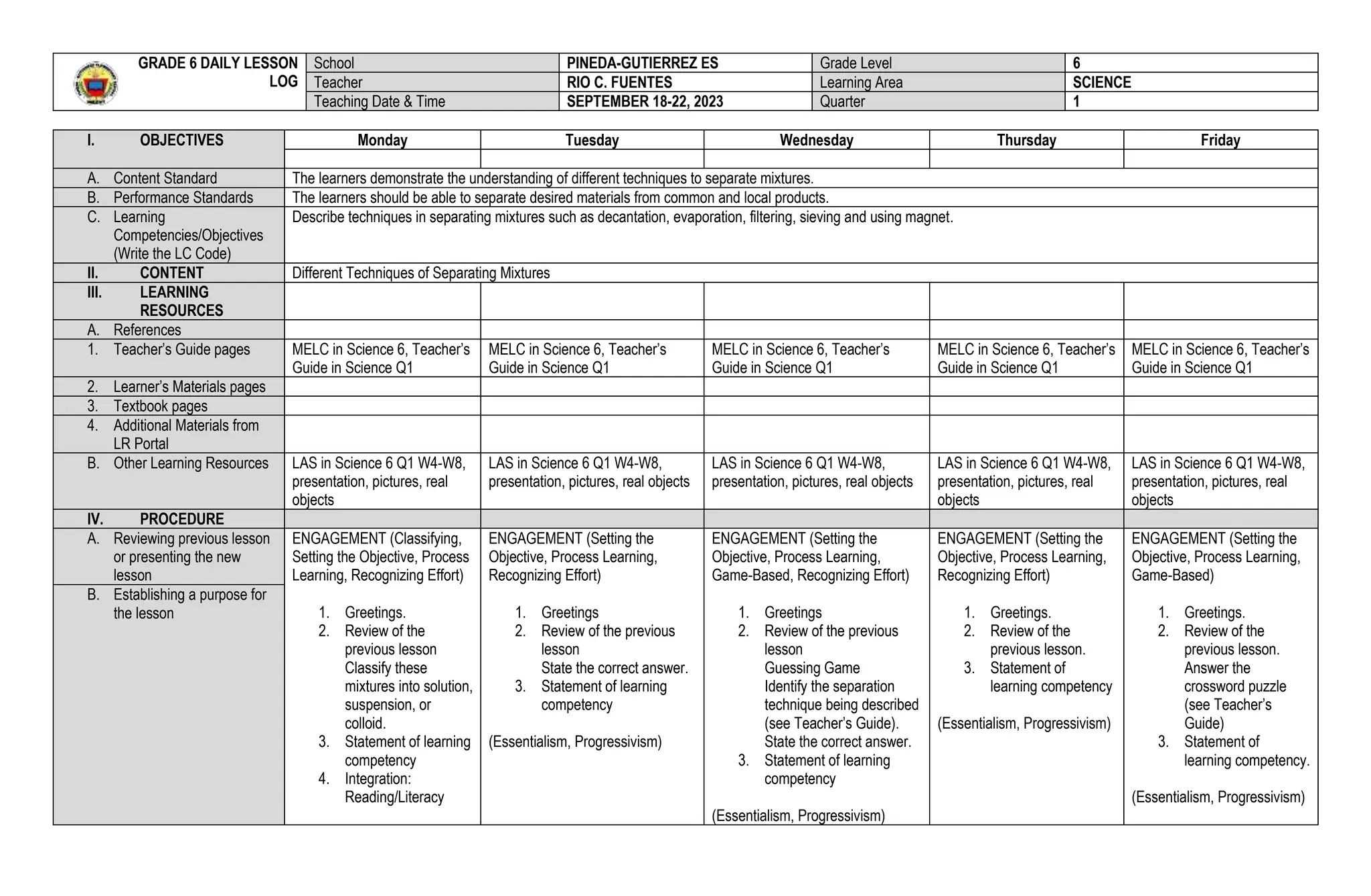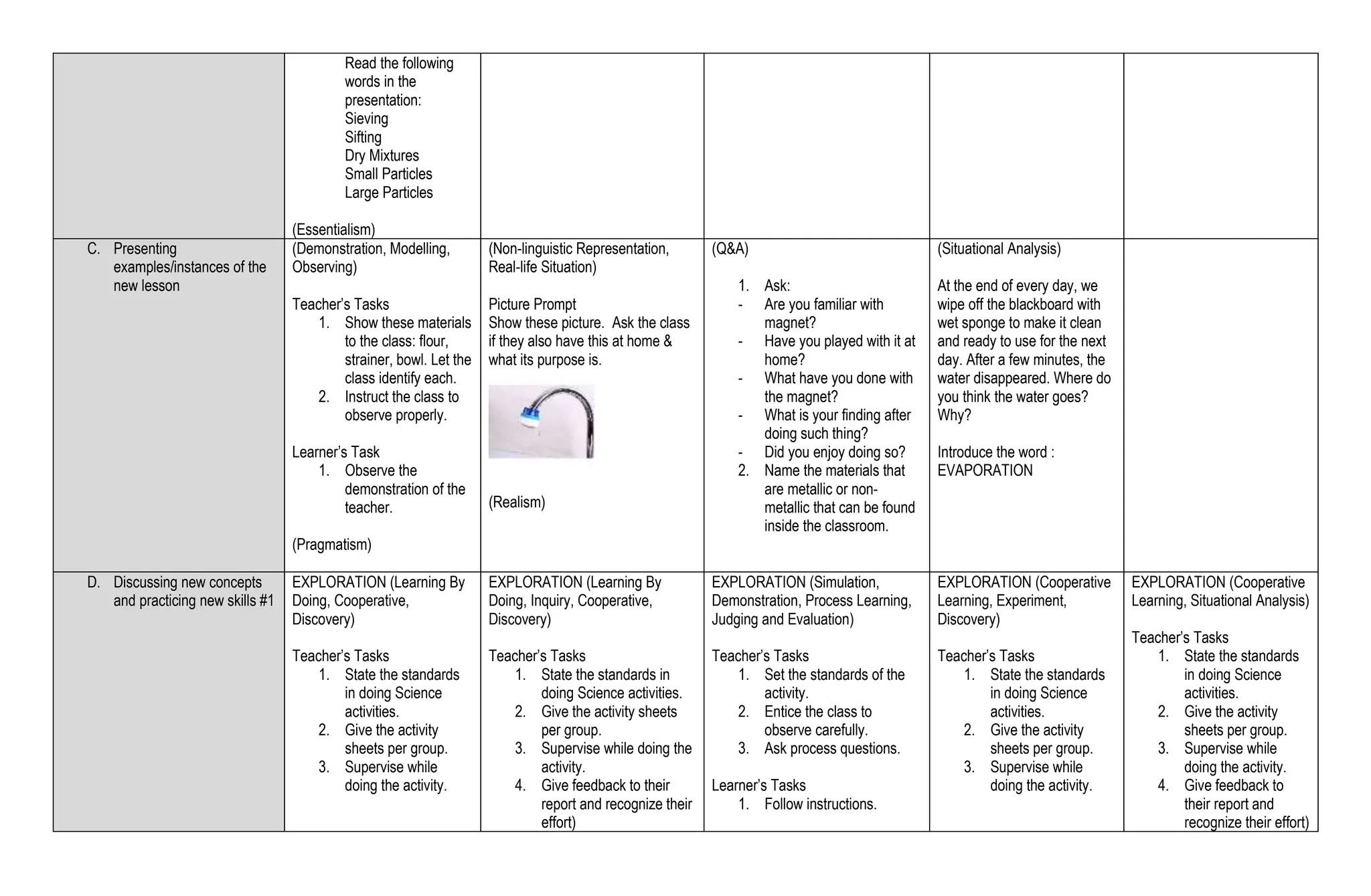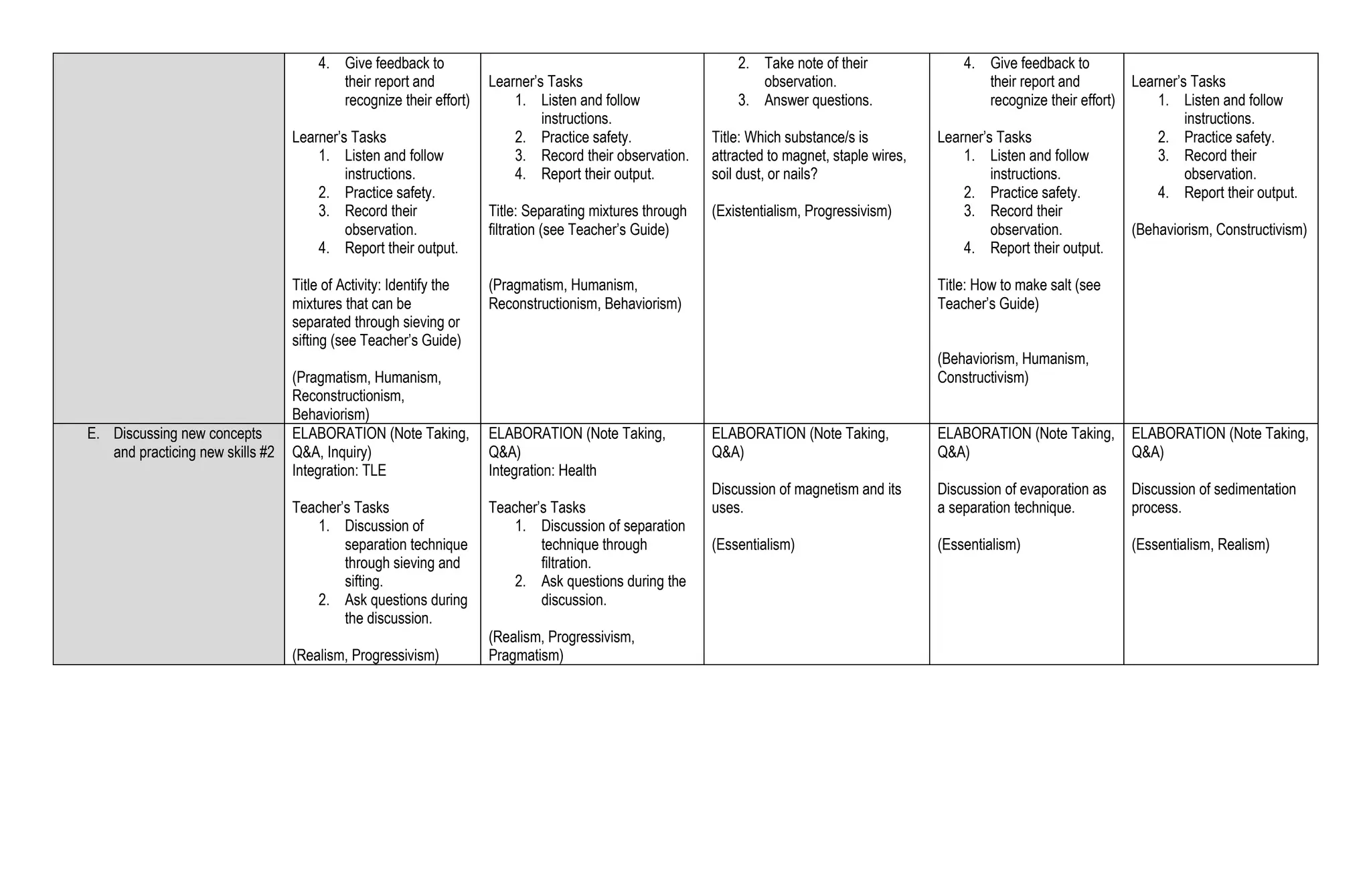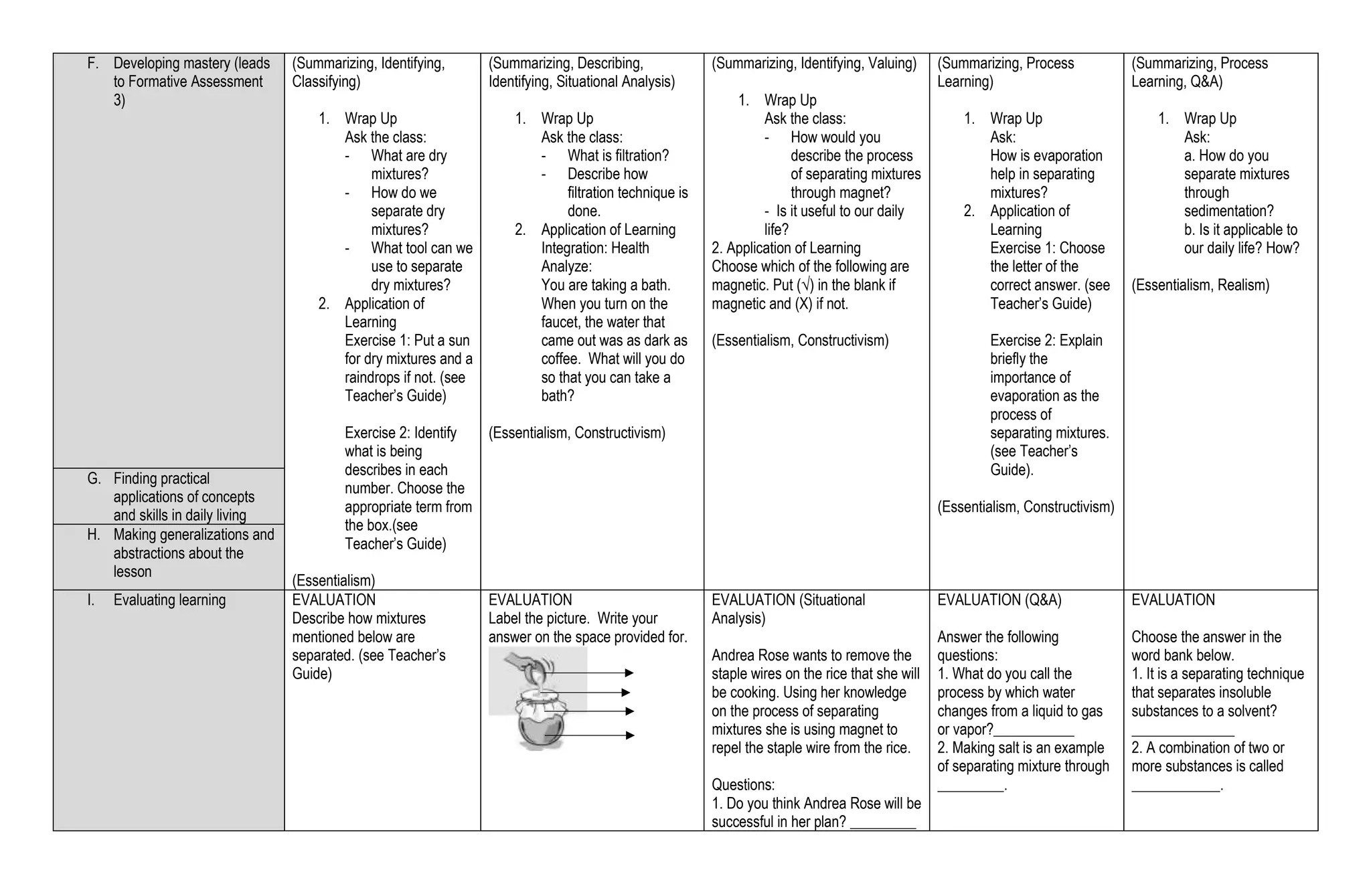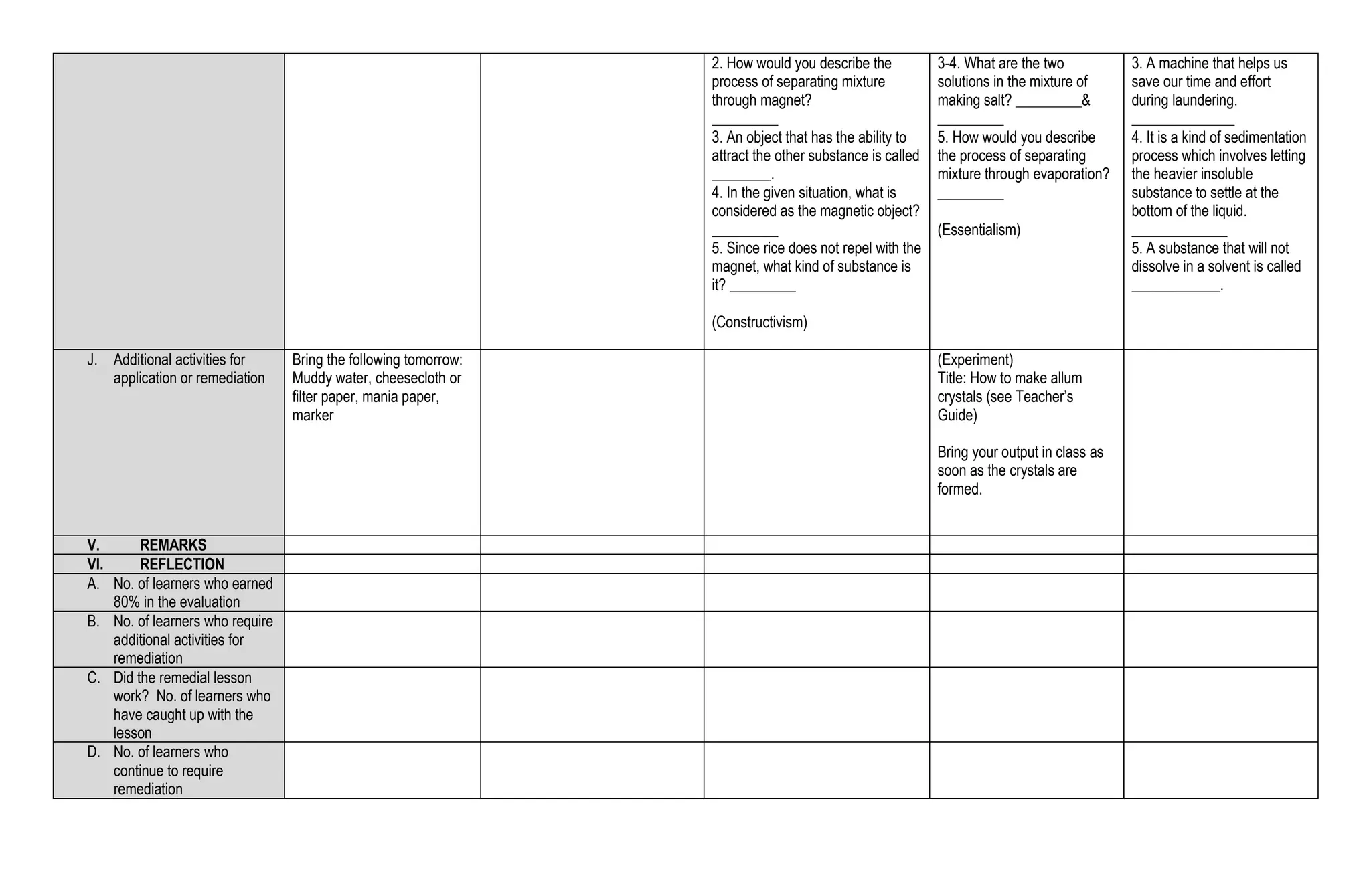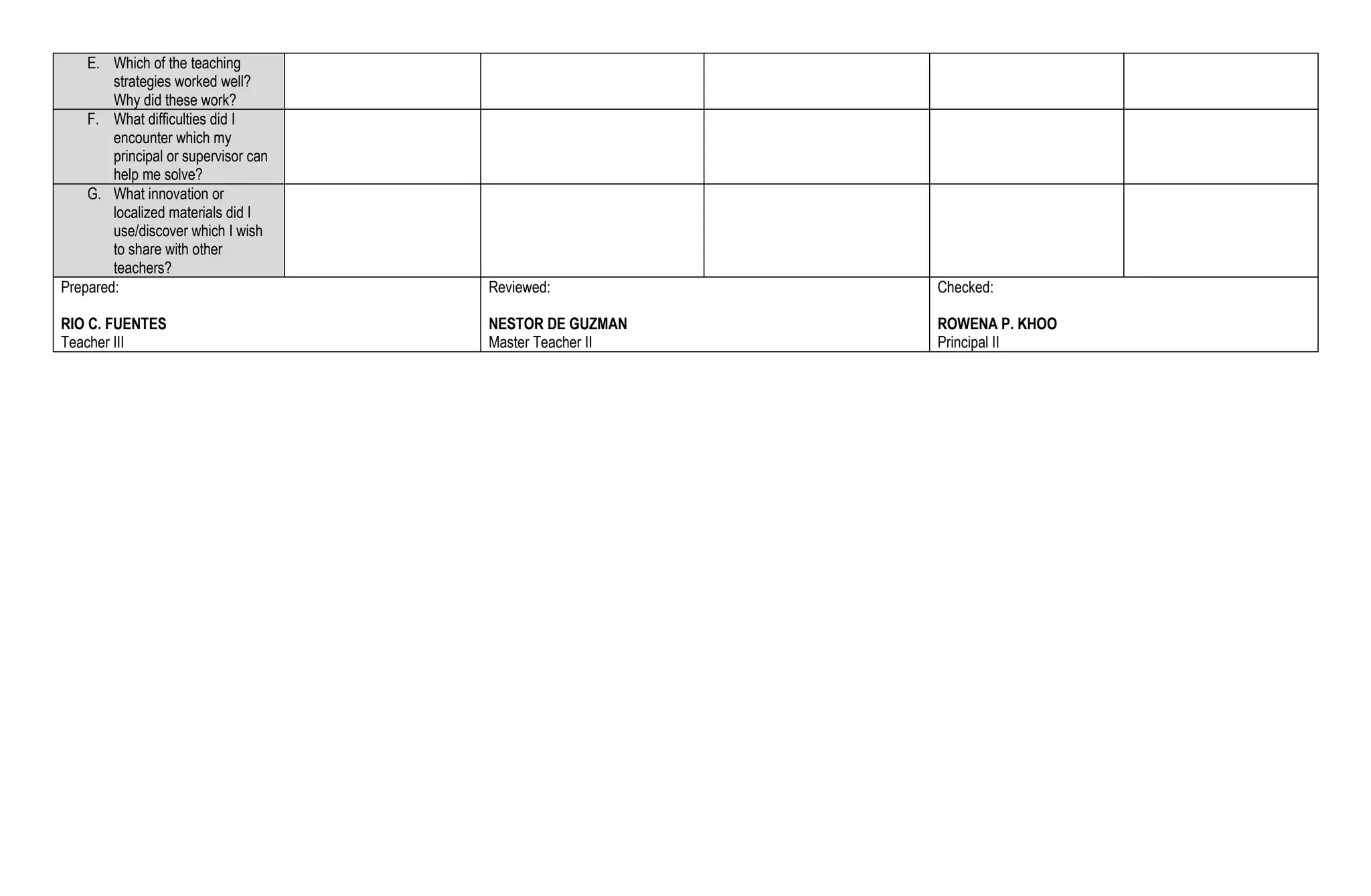This document contains a daily lesson plan for a 6th grade science class covering techniques for separating mixtures. The lesson plan outlines objectives, resources, procedures, activities and assessments for a week of instruction. Key concepts to be taught include decantation, evaporation, filtering, sieving, using magnets, and separating mixtures through these various techniques. Students will engage with demonstrations, experiments and discussions to practice identifying and applying different separation methods. Assessments will evaluate students' understanding of separating mixtures through described processes.
